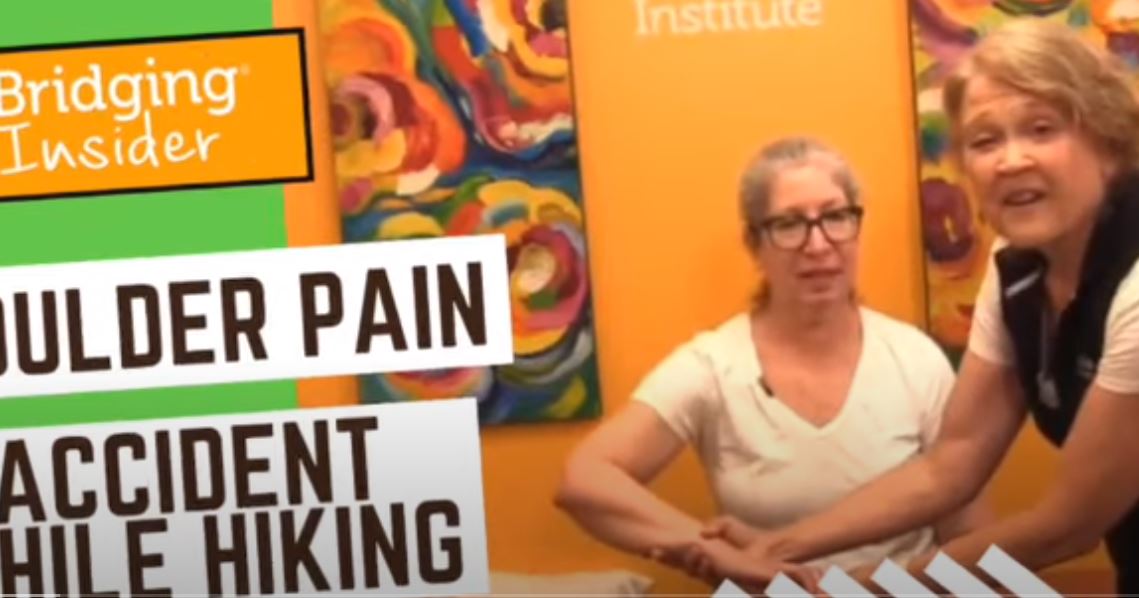Summer Adventures, Hiking, and Injuries. Sometimes Things Happen … 😣
The theme for this week … injuries from hiking
Have you been outdoors doing an activity you love and suffered an injury? Hiking is such a wonderful way to enjoy nature and be active. It can also be fraught with danger. Read on …
How common are hiking injuries?
This 2022 summary from Hikers Daily is a compilation of hiking statistics which are rather sobering. Lots can go wrong, although much of what is mentioned can be prevented. (Skip the beginning stats on deaths — too depressing and not that common!)
Stats on hiking injuries
A few quick nuggets are:
- Most injuries occur when descending
- Falls and slips account for 50% of the injuries
- Ankle injuries are most common
- About 4,000-5,000 hiking-related injuries happen annually.
We find injuries from outdoor activity leave lingering effects
Working with our clients, we find micromovement issues correlate to the specifics of how you fell and the injury occurred. Often, there are overlooked aspects to the event.
Injuries happen so quickly that the impacts and effects are hard to accurately recall. Your muscles can be compressed or twisted in odd ways, and you may not even realize what all happened.
Weeks and months later you wonder why you haven’t fully recovered. That’s because are there is something more.
Once we use the Bridging® Technique to analyze and then reset impacted micromovements, your body can finish the task of healing.
In this week’s video session, you’ll see an example of how we were able to reset the compression caused by Martha’s fall while hiking.
Insight of the week from Cara
Often the reason you haven’t recovered is that there is something else
Yes, we get injured. After some time off the body usually heals and all is forgotten. But when it doesn’t we often wonder “why?” and “what else is going on?” and, “will it ever get better?”.
The case of the missing clues
When people fall, they often remember what hurt the most or what was broken. What is often overlooked are the other ramifications of an impact.
Some key questions we think through to discover more about the impact are:
- Which body parts hit something?
- Which body parts were hit by something?
- Which body parts bounced and/or twisted as a reaction?
Putting you back in better working order
We assess your micromovement flows and transitions, then compare them to what would be expected given the injury. Discrepancies between the actual and expected data lead to us hypothesize about what else may have happened. This is where the gold lies!
Once we piece together a likely scenario of a hidden impact, we can recreate related compression patterns and gently rock your muscles to allow the micromovement logjams to dissipate.
We then use the gentle Bridging® reset process so the affected muscle groups can work together again. This can usually be accomplished in 2-3 sessions.
Have you had an outdoor injury which affects you and curious if Bridging® can help? Contact us. We are happy to see how we can help.
Stories from our sessions … resetting shoulder stress from a fall
Martha was on vacation hiking — enjoying herself as she should! Just as she was nearly finished she got tangled up and fell, injuring her shoulder. However, there is another part to this saga …
Her post-session update was “I felt great … and have been diligent with the PT exercises for overall steady improvement.”
What happened to Martha and when?
Micromovement disrupters
What’s happened to Martha and when?
- Birth/Early life: none known
- Injury/Accident: arm fracture, sprained ankle
- Medical procedures/surgeries: none
- Illness: none of note
Sometimes there is more to the injury than you suspect
Goal: Improve shoulder function in order to stay active
What did we find?
We found that her core was also impacted by the fall. This was impacting the ability of her shoulder function to recover.
What did we do?
Creatively and gently, we positioned her in a manner similar to how she fell. Once in this position, her core and shoulder were guided into working together again.
You’ll have to watch the video to see how we go about checking the arm and shoulder interconnections, and then resetting them. It was cool to see!

